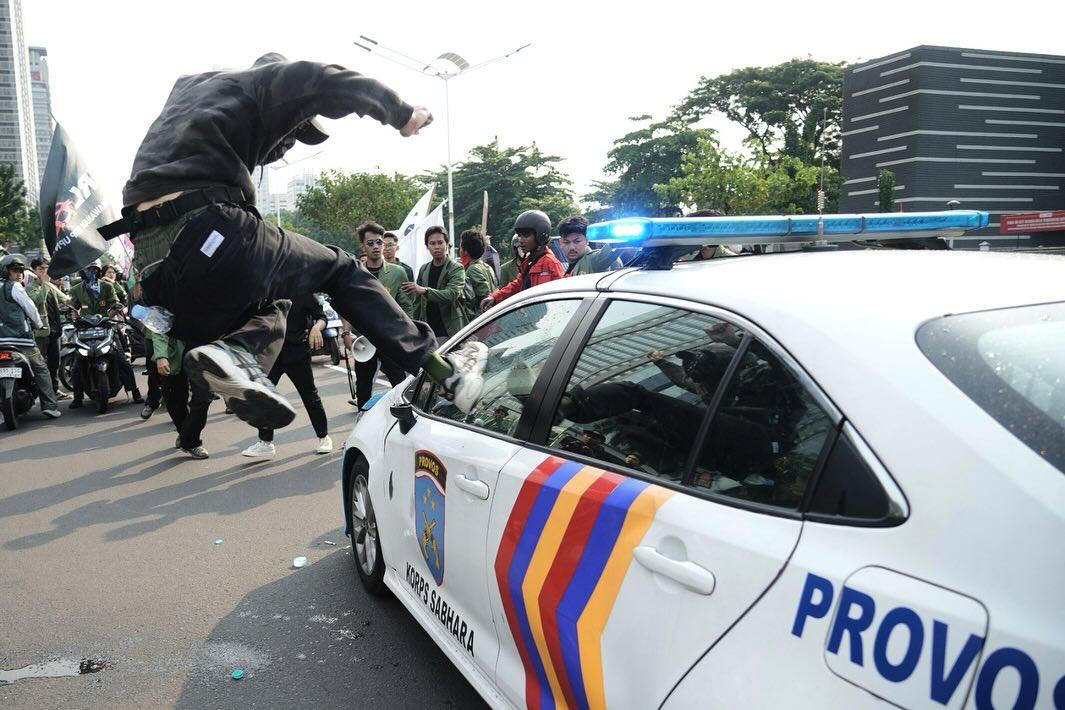
Jakarta, September 2, 2025 – The wave of demonstrations that began on August 25, 2025, across Indonesia continues to unfold, leaving behind a trail of tragedy and unrest. What started as a protest against the proposed Rp50 million monthly housing allowance for members of parliament has grown into a nationwide movement with broader demands: the evaluation of parliamentary performance, police reform, and an end to excessive use of force by security forces.
On August 28, tensions escalated after a motorcycle taxi driver, Affan Kurniawan, was struck and killed by a Mobile Brigade (Brimob) tactical vehicle in Bendungan Hilir, Jakarta. Footage of the incident spread rapidly across social media, sparking solidarity protests from students and online driver communities. The tragedy became a turning point, expanding the scale of demonstrations both in the capital and across the country.
Violence soon spread to other major cities. In Makassar, protesters set fire to the regional parliament building (DPRD), killing three staff members trapped inside. In Solo, a rickshaw driver named Sumari died in clashes, while in Yogyakarta, student Rheza Sendy Pratama was killed during a demonstration outside the regional police headquarters. Another victim, Rusmadiansyah, an online driver, was beaten to death by a mob after being accused of being an intelligence agent. Some reports also point to additional casualties, including a vocational school student in Pati. In total, at least seven to eight people have lost their lives amid the unrest through the end of August.
The government has responded with condolences. President Prabowo Subianto ordered an open investigation, while the National Police Chief and Jakarta Police Chief issued public apologies for the casualties. Seven Brimob officers linked to Affan Kurniawan’s death have been detained and face legal proceedings. Still, public anger shows little sign of abating.
As of September 2, demonstrations remain ongoing in several regions with sustained intensity. Thousands of protesters have been detained over the past week, peaking on August 29 when more than 1,300 people were arrested in a single day. At the same time, the Alliance of Independent Journalists (AJI) reported cases of violence and interference against journalists covering the protests.
The late-August demonstrations mark one of the largest protest waves in recent years in Indonesia. With the death toll mounting, mass arrests, and widespread property damage, the public now awaits whether the government and parliament will respond to citizens’ demands with genuine reforms—or risk allowing the crisis to deepen further.
Written by: Reza Rizkia